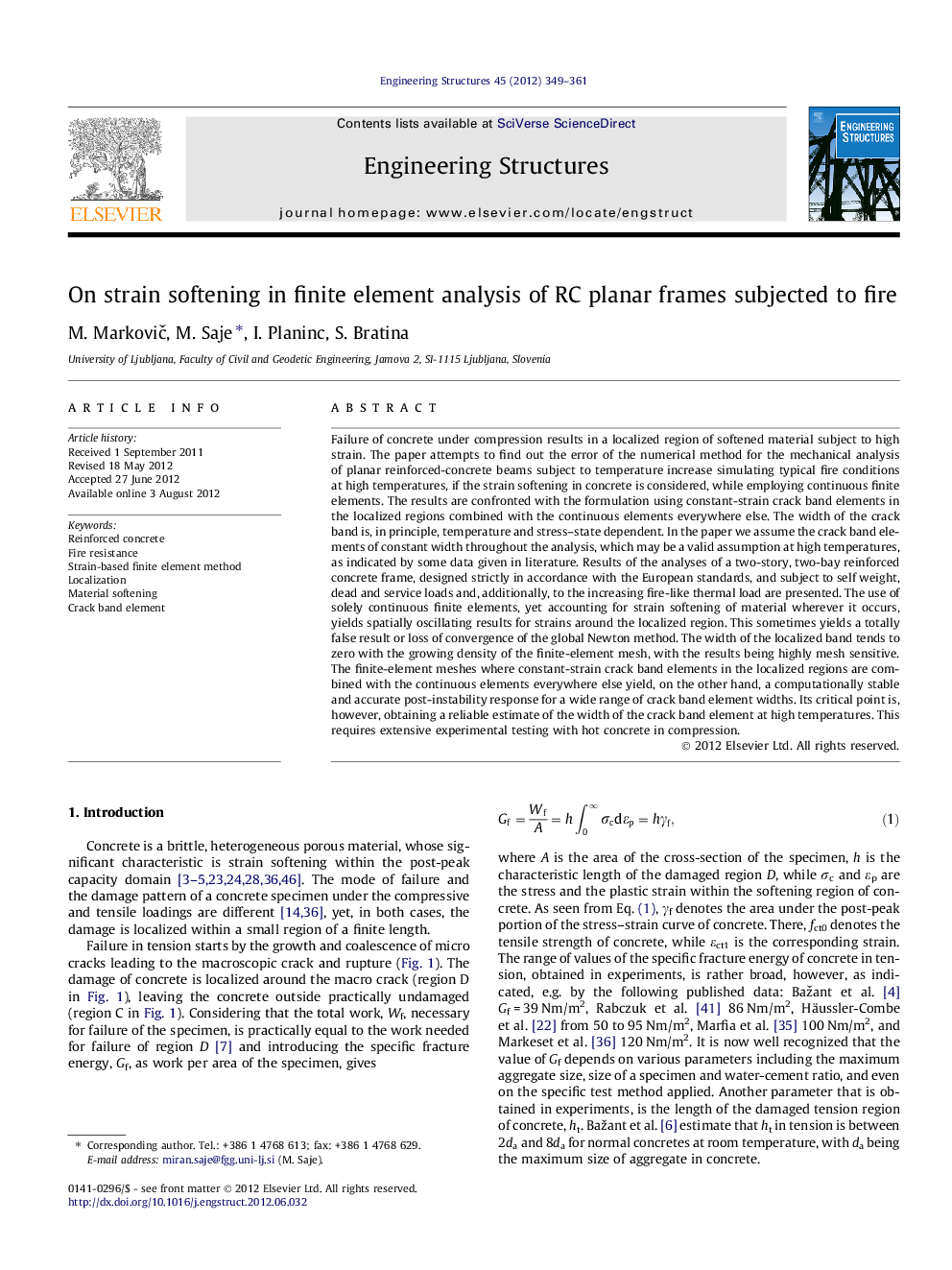| کد مقاله | کد نشریه | سال انتشار | مقاله انگلیسی | نسخه تمام متن |
|---|---|---|---|---|
| 267134 | 504396 | 2012 | 13 صفحه PDF | دانلود رایگان |

Failure of concrete under compression results in a localized region of softened material subject to high strain. The paper attempts to find out the error of the numerical method for the mechanical analysis of planar reinforced-concrete beams subject to temperature increase simulating typical fire conditions at high temperatures, if the strain softening in concrete is considered, while employing continuous finite elements. The results are confronted with the formulation using constant-strain crack band elements in the localized regions combined with the continuous elements everywhere else. The width of the crack band is, in principle, temperature and stress–state dependent. In the paper we assume the crack band elements of constant width throughout the analysis, which may be a valid assumption at high temperatures, as indicated by some data given in literature. Results of the analyses of a two-story, two-bay reinforced concrete frame, designed strictly in accordance with the European standards, and subject to self weight, dead and service loads and, additionally, to the increasing fire-like thermal load are presented. The use of solely continuous finite elements, yet accounting for strain softening of material wherever it occurs, yields spatially oscillating results for strains around the localized region. This sometimes yields a totally false result or loss of convergence of the global Newton method. The width of the localized band tends to zero with the growing density of the finite-element mesh, with the results being highly mesh sensitive. The finite-element meshes where constant-strain crack band elements in the localized regions are combined with the continuous elements everywhere else yield, on the other hand, a computationally stable and accurate post-instability response for a wide range of crack-band element widths. Its critical point is, however, obtaining a reliable estimate of the width of the crack band element at high temperatures. This requires extensive experimental testing with hot concrete in compression.
► New condition for the onset of localization at high temperature is set as det[C] = 0 or/and C11 = 0.
► Strain-based finite elements appear to be ideally suited for temperature-dependent problems.
► The strong satisfaction of the continuity condition for forces at the discontinuity point.
► The discontinuity of the strain and the softening zone of the stress–strain law are properly considered.
► It is numerically shown that any ignorance of the strain discontinuity yields wrong results.
Journal: Engineering Structures - Volume 45, December 2012, Pages 349–361